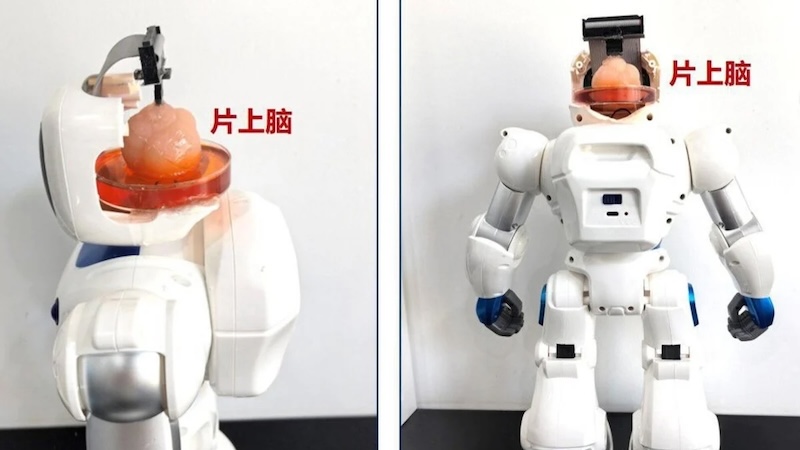
Chinese researchers have built a robot and given it a brain made from human stem cells. The technology could help treat brain damage in the future.
Researchers from China have developed a technology to give humanoid robots a human-like brain. A research team from Tianjin University and Southern University of Science and Technology developed a brain-on-chip technology that combines a neural chip with a so-called brain organoid. It consists of tissue derived from human stem cells.
Researchers are building robots with brains made from human stem cells
With the artificial brain, the scientists supply the robot with energy and can teach it various tasks. So far he can avoid obstacles and grab objects.
media reports According to them, it is the world’s first open-source brain-on-chip system for intelligent and complex information interaction, which could lead to the development of a brain-like computer system. The technology is an emerging branch of brain-computer interfaces (BCI) that aims to combine the brain’s electrical signals with external computing power.
Initially, Elon Musk’s efforts with Neuralink gained widespread international attention. Tianjin University now claims that its research could lead to the development of hybrid human-robot intelligence.
Brain-on-chip technology could repair human brains
The brain organoids typically only occur in early embryos and can develop into various tissues. When transplanted into the brain, they can establish functional connections with the host brain. The research team explained this in an unedited manuscript published in the journal Brain published by Oxford University Press.
“Human brain organoids are a remarkable platform for modeling neurological diseases and a promising approach to brain repair,” the text states. “However, the effects of physical stimulation on their development and integration are still unclear.” The technology is also still struggling with bottlenecks such as low developmental maturity and insufficient nutrient supply.
However, treating the transplants with low-intensity ultrasound improved the differentiation of the organoid cells into neurons and the connectivity with the host brain. In the future, the technique could lead to new treatments for neurodevelopmental disorders and repair of damage to the cerebral cortex.
The transplantation of brain organoids is considered a promising strategy for restoring brain function by replacing lost neurons. In addition, people could also rebuild neural circuits in this way.
Also interesting:
- Scientists create robots with faces made from living skin
- Warehouse logistics: robot army to process our orders
- Neuralink by Elon Musk: Is the brain chip the salvation or downfall of humanity?
- Start-up develops living computer from human brain cells
The post Using human stem cells: Researchers build robots with living brains by Beatrice Bode appeared first on BASIC thinking. Follow us too Facebook, Twitter and Instagram.